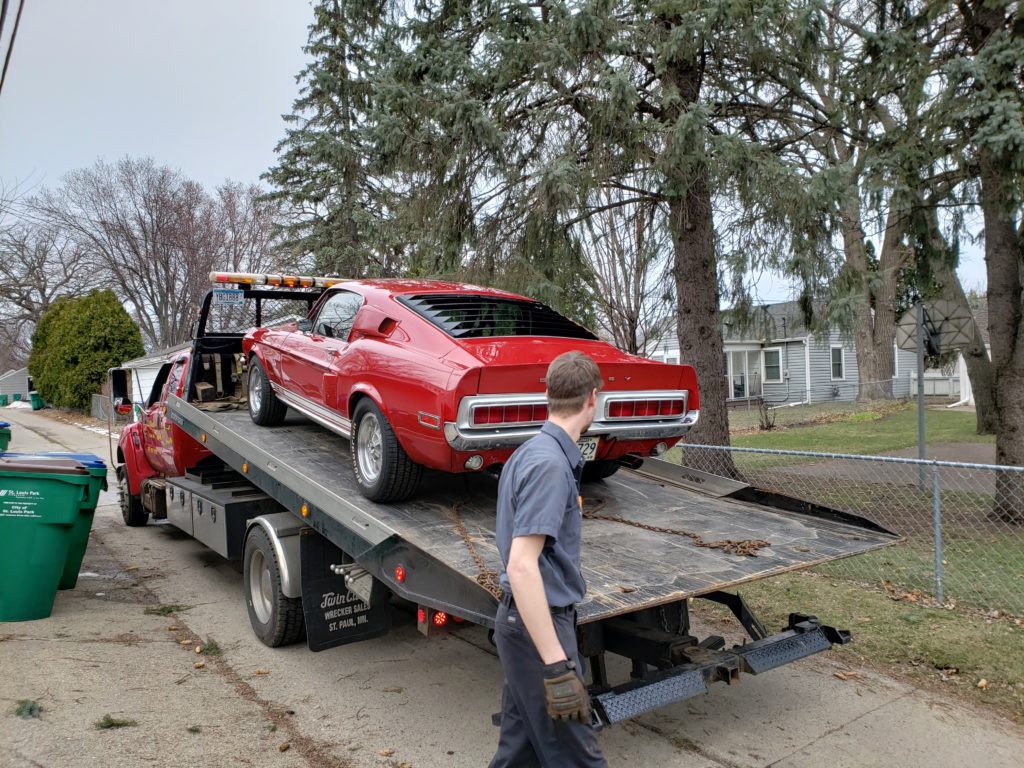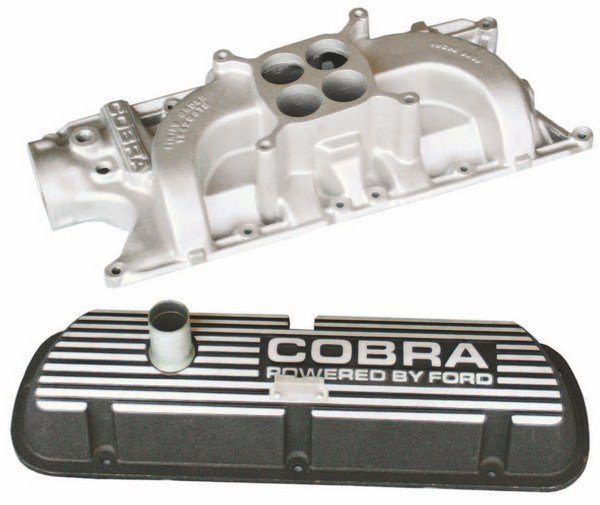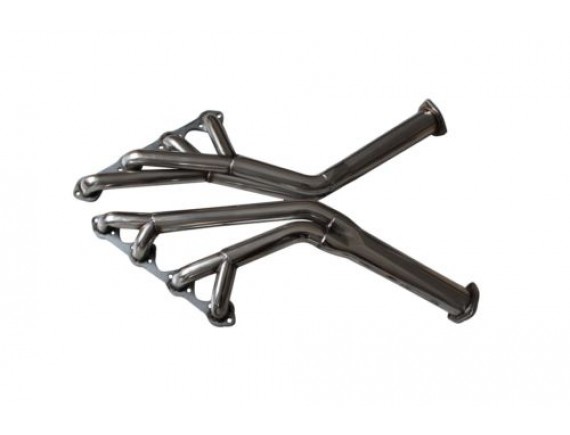Long story short. I called Dan Mattila in Fridley, a local club member who has an auto shop, and told him about the knock. It was agreed that he needed to have the car to diagnose how bad it was. He sent a flat tow truck to pick it up. He quickly told me I had at least three cracked piston skirts, a common issue on high mileage 302’s, plus a loose timing chain and some leaking exhaust seals. I gave him the go ahead to fix it. Weeks and more than a month later, he still could not give me a date as to when my car would come back to me. Car show season starts the first week of June. He got my car in early April. Finally about two months into this I went to his shop to work out a plan. I was shocked to see that my car had been setting outside in a unseasonably wet April and May. It had not seen rain for 30 years. We did not work out a solution and I had the car picked up and moved back to my garage.

Time for Plan Two
I called a number of local shops and got lots of referrals. What I discovered is almost all of these shops who can rebuild a Mustang were focused on newer versions with fuel injection and a computer. If this block were trashed that is what I was going to do. Put a 1985 or newer 5.0 in it. In fact I talked to Mattila about one he had built that was available. 450+ HP, roller cam, aluminum heads. If my block was shot that was the option.
I also became aware that I needed to be an expert at Ford 302 engines when I talked to a builder. This should be the last time I have to rebuild this engine might as well make it count and get better results.
So I talked to a local auto shop that did my oil changes and such. He told me he worked with a shop in St. Paul that did engine rebuilding. I moved the car to his shop, he pulled the engine out so it could be picked up by that rebuild shop. Dan, the engine builder, called me and we talked about my engine.
First thing Dan asked me is why he had my engine? I told him about the knock and 3 cracked piston skirts. He had taken it apart already. He told me there were no cracked pistons. But it did need rebuilt. It had two bad head gaskets. And the block and crank were fine. What did I want to do with this engine? I told him I’d like a strong engine with 350 HP. That number was very possible. What was it going to take and what was it going to cost?
At the least, my engine needed new head gaskets, But if I’m opening the engine up I might as well check to see what is worn and what is fine. And I might as well see what it would take to make it more awesome, right? I knew a lot about these engines. But with Google at my keyboard I dug into options, parts and what other people have done. I spent a lot of time really digging into what makes the 1968 Ford 302 tick.
Here are some things I learned:
- That 5.0/302 block is the same block that has been used since 1961 until 1995. The modular 4.6 was introduced in 1996. So that means ALL those aftermarket 5.0 parts will fit in this block. But all those parts will not work together. The 5.0 engine has evolved a lot over the years. In 1985 Ford went with Fuel Injection and a roller cam. My 68 engine has a flat tappet valve train with a carb. (Although this older technology has evolved, too.)
- (By the way, these blocks are often called Windsor engines. The engines were manufactured in Windsor, Ontario. Cleveland blocks were made in Cleveland, Ohio. This label was first used to differentiate between the 351 Windsor VS Cleveland. It’s used now to refer to the 5.0L 302 engines built there.)
- The first choice was whether to stay flat tappet valve train or go to a roller rocker & cam. Both valve trains would fit my application. However, to go roller cam was going to be about $1000 more than flat tappet. Lot of advantages to a roller rocker & cam valve train. Dan, the builder, wanted to stay with flat tappet with roller tips on the rocker arms. He was the expert.
- The pistons were stock, original pistons with 100,000 miles on them. We didn’t replace the pistons in 1982. The engine builder wanted to go with flat top, forged aluminum pistons with dishes in the top for the valves. So that is what he installed. Click here for info about these pistons.
- Next question is what to do with the heads? The stock heads limit the capabilities of the engine. Those heads were designed for about 250 horsepower. If you want more power, something needs to be done to allow the engine to breath better. An auto engine is an air pump. Air comes in and air/exhaust goes out. Make that process more efficient and the horse power goes up. Dan wanted to clean up and port those stock heads. But with what he was going to charge to do the original heads, I could add a couple hundred dollars and pick up some Edelbrock aluminum heads that were already polished, ported with bigger valves. (Read about the specs on Ford 302 heads.) (Read about the Edelbrock Aluminum heads I put on this engine.)
- What about the intak? My car has the original Aluminum COBRA intake on it. This is an Offenhauser dual plane, hi-rise intake made to Shelby specs. I told the builder I wanted to keep that on the engine. It turns out Shelby American had the intake designed to give this engine more low end torque. Dan said he would clean up the ports and flow of that intake.

- I had a Holley 600 cfm 4 bbl carb on it. Not the original carb but it does come from that period of time. They couldn’t get that carb to perform. Dan told the shop not to install that engine with that carb. To get my car back a week or more faster, I bought a new Holley Brawler 4 bbl with an electric choke, per Dan’s instructions.
- The other piece of this conversation is to make all these parts work together. I am trying to get some pretty serious horsepower. That means every piece needs to considered and “matched” to work best. Add to that, one potential surprise buying aluminum heads. Will the existing intake and exhaust headers bolt up to the heads? Edelbrock assured me the heads I picked would bolt to the intake and exhaust headers. We know the stock ones would.
- I already had a set of Try-Y exhaust headers on the car. These are also designed for lower end torque rather than hi end RPM horsepower. Headers are a must on a small block Ford. Restrictive exhaust forces the engine to use power to push the exhaust out. The right size headers and exhaust make it easier for the exhaust to leave. Tri-Y refers to the design and have proven to be the best choice for small block Fords.

- I also had to know if the transmission and rear end would handle more horsepower from this engine. This car came from Ford with a bulletproof 4 speed Toploader that was rebuilt with all new gears. That transmission will easily handle 400+ HP.
- The rear end is the a Ford with a 3.89 set of gears. Yes, that rear end will more than handle 350 horsepower.
- What about the braking or the suspension? Making the car go faster is great but can the rest of the car handle it? In this case I have already rebuilt all those parts and upgraded most. The entire suspension has been replaced and the car lowered an inch.
- And it has Wilwood 4 piston disc brakes on it.